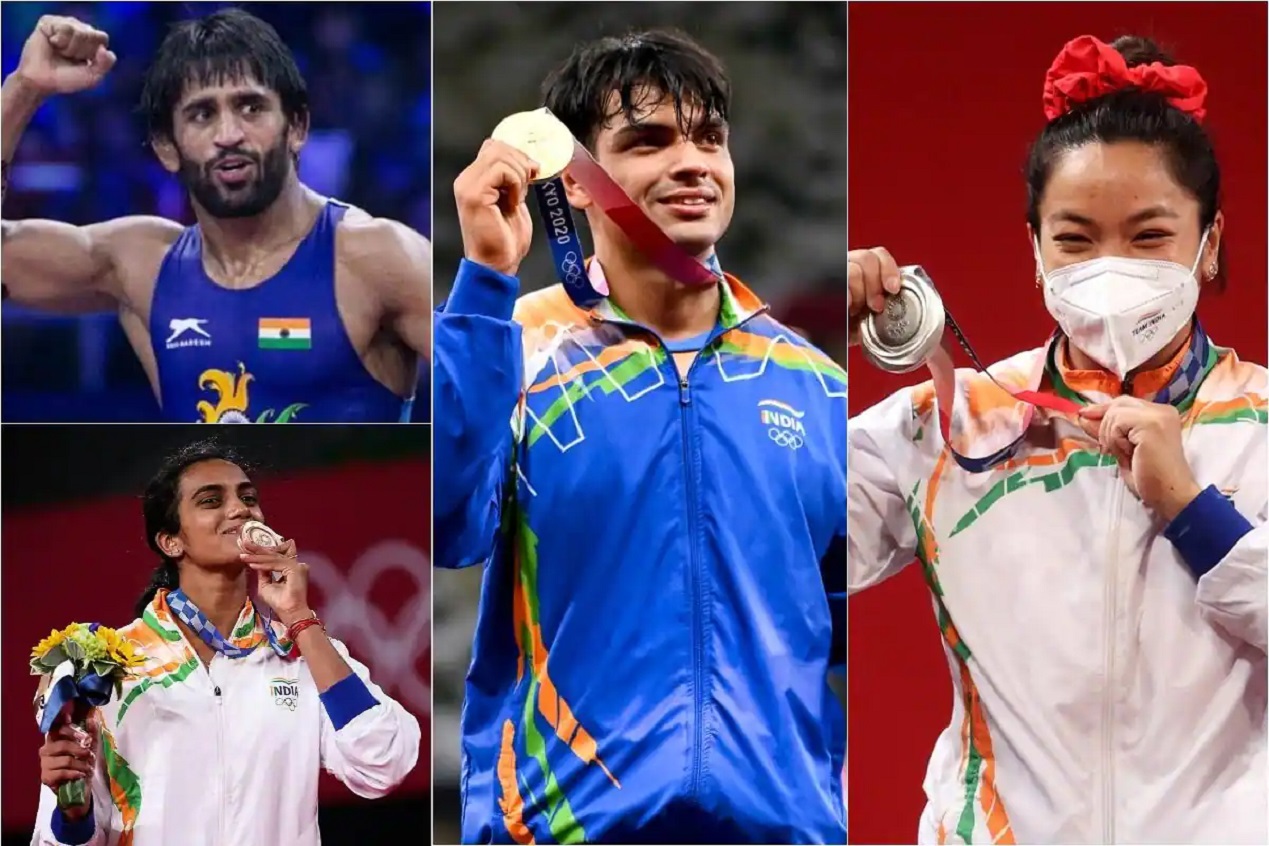Nothing succeeds like success on an international stage for lifting nation's morale. But developing competitive sporting capacities in India for success in Olympics also has value in building national identity, national pride and bonding. For consolidating such benefits, India needs a national sports policy and its institutionalisation for efficient implementation. We need to note that achievements at international level add more than value for money invested. It builds national pride, national identity, physical fitness and mental alertness. It also fosters strong bonding across caste, community and racial divides. Our budgeting policy needs to factor that.
The current Sports model is of training 9000 boys and girls at 189 Sports Authority of India (SAI) Centres, which is supplemented by private coaching offered by recognised sportsmen. With an annual Sports budget of Rs 2625 cr, do the outcomes of our current capability meet the hopes and expectations of 1300 million Indians? Should the clamour for India's achievements and Olympic medals hyperventilate once every four years and then fizzle out for the next three? Indian sportsmen and women, and the system, all have demonstrated their commitment to train for international competitiveness. If provided with systematic planning, on-going training and preparation can they achieve laurels for our country that justifies our demographic size?
How can India, despite our low per capita earnings of 2000 US dollars, churn out competitive athletes and players on a regular basis? India's limitations are known: poor sports training facilities, poverty and malnourished human material, which has the spirit, but constrained by limited access to good diet and good training. Such limitations impair India in building up broad-based skills in competitive sports, strength and stamina. Unless these are addressed from a very young age, our country's sports management system cannot claim to have given our young sportsmen and women a fair chance to do their nation proud.
A limitation, that is not well understood in sports policy-making is the need to develop and define sports as a career path. Our sportsmen are feted by Ministers, lauded by the media and glorified by the public when they win. But after a few years when the sport career ends, some of them end up as labourers to make their living. As sunset in an athlete's career comes early, if the policy does not enable a professional career after a sports career to make a living, nothing can be more demoralising for a promising sportsperson. A University degree in sports management disciplines would address that limitation.
An approach that could be considered for India to have continual output of sports stars is that if our 750 Universities are mandated to set up one sports academy and one or two sports schools in each of India's 700 districts. These institutions should scout and select suitable boys and girls from ages 8 to 13 years. Provide them with nutritional diet, sports training-education up to secondary levels. Children, who show potential at sports schools, would get admissions to the University sports academy at District levels. Where they would be competing at State and National levels. University sports academies should also provide degree level educational courses in sports physiology, coaching, PR skills, sports management for their post-sport careers.
Children from sports schools who don't want admissions in the University sport academies could find options in enrolment in military and police services. These organisations have benefits of a secured career, as well as opportunities to develop their skills in sports. Recruiting sportswomen in police services would have additional benefits: enhance gender balance in policing services as a public policy need; improve public image of police services and improve fitness and sporting standards in the district police organisations. For children from India's rural sector, such programmes would encourage parents and their children to compete for entering Sports Schools as these will have clearly defined career paths.
Those who compare our performance with China's should consider that the point of departure between the countries was in mid-1980s, both for per capita income and nutritional intake levels. From mid-1990s, trajectories of per capita intake protein start to widen between the two countries, as well as their investments in sport infrastructure. This is reflected in their medal haul, 20 years later.
People will ask where the money is going to come from for such large scale infrastructure of 700 sports schools and 700 University sports academies. An estimate of costs for construction of 1400 sports schools and University sports academies would be around Rs 20,000 cr. to 25,000 cr. plus around 5,000 cr. for equipment.
If one considers the Union budget for 2021-22 which allocated Rs 3483236cr. for Major Expenses, whereas capital costs for sports infrastructure is around 1 percent of this estimate. Assuming this infrastructure is built over three years with national estimates of economic growth at 7 percent, the cost for paving India's path for building up our nation's pride and sporting spirit – and Olympic successes - would be an investment well spent on creating sports and outdoors minded generations coming out of our colleges. Recurring costs for diet, boarding and academics could be found in the form of Central Sports Cess on liquor and cigarettes. Last year, 6.5 billion litres of liquor was consumed by our countrymen earning revenue of Rs 175500 cr. while cigarette revenue was 35600 cr. Thus, the Sports Cess could have an annual potential to generate 6200cr. to sustain sports training under this scheme. Results of this scheme will start showing in three Olympics after the full scope of the scheme gets going.
There are many more Neeraj Chopras and Salima Tetes waiting to be discovered in our country. The government has taken due note of that fact.










Post new comment